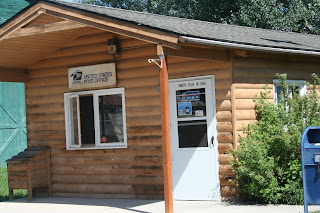I used to have grocery stores in my town. Within the last three years the stores’
missions have changed. Providing groceries to customers has taken second place
to collecting donations from customers. It’s
a rare day that a customer (or should I say donor?) can buy so much as a pack
of gum without the clerk at the checkout asking, “Would
you like to donate to the National Society for Rattlesnake Abuse Prevention?”
Don’t think that a person will slyly avoid contributing by
clicking “no” to the same soliciting question displayed on the credit card key
pad. Those questions all read something
like this, “Do you want to donate to the Association for Better Bananas ?” As soon as you click “no,” the clerk directly
asks, “Do you want to donate……?” I think
the key pad must be there only to collect the fingerprints of reluctant
contributors.
There is diabolical reasoning involved in this method of
solicitation. Why I should care if the
person behind me in the checkout line thinks I’m a heartless cheapskate, I don’t
know. But saying, “No” within that person’s
hearing is much more embarrassing than clicking “no” on a key pad. Naturally, the peer pressure aspect never occurred
to the grocery store solicitors. This
additional discomfiture is all coincidence.
In my view, the idea that the grocery store is a first-rate place to
gather donations is fundamentally flawed.
After spending $100 on groceries that cost me $80 the week before, who
wants to part with more cash? I need a drink
of water, a round of relaxation breathing, and a cold pack for my aching head.
Fortunately, or unfortunately, depending on your perspective,
I was a raised by a woman who didn’t know the meaning of the following phrases:
back down, peer pressure, go along with the crowd. Whenever I find myself in a
situation laced with the faintest scent of any of those phrases, my inner thirteen-year-old
revolts, “See if you can make me do it!”
By virtue of my inner thirteen-year-old, the grocery stores
no longer twist my arm. Now, my stock phrase at the checkout counter is, “My
policy is that I never donate to anything over the checkout counter.” There is something about having a personal policy that makes it much less heartless and cheap when declining to donate.
The old saying is that: turn about is fair play. I think it fair that I should indulge in some
entertaining reciprocity at the store.
My latest plan involves finding the manager and within hearing of several
customers stating, “I am collecting for the orphaned song bird fund. Would your store like to donate?” Or maybe next time I’m solicited at the
check stand I’ll ask the clerk if she will donate to the customer recovery
fund. This is a fund for individuals to
recover the all funds they have donated every time they enter the grocery
store. The customers need to recover the
money so that they can afford to buy groceries.












